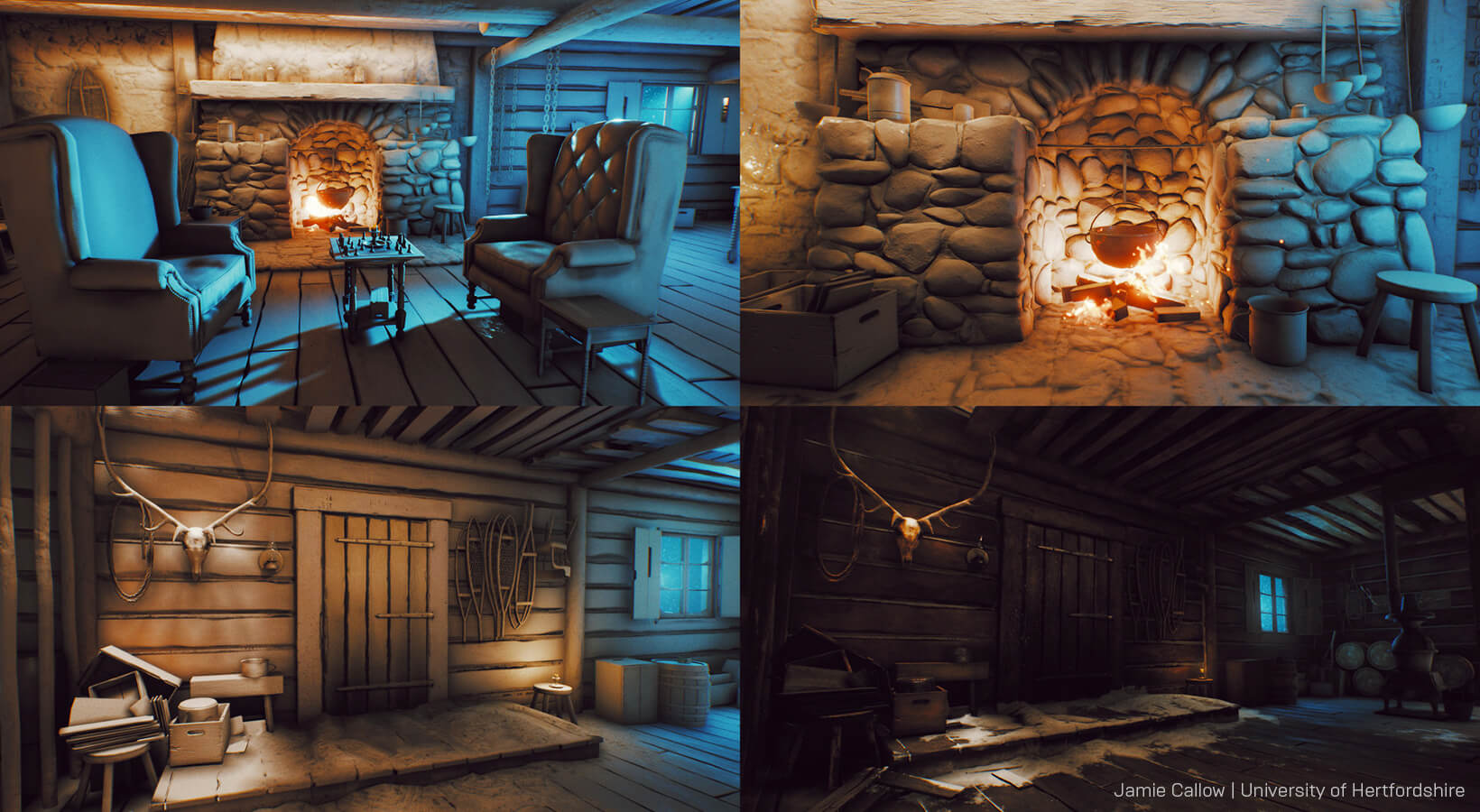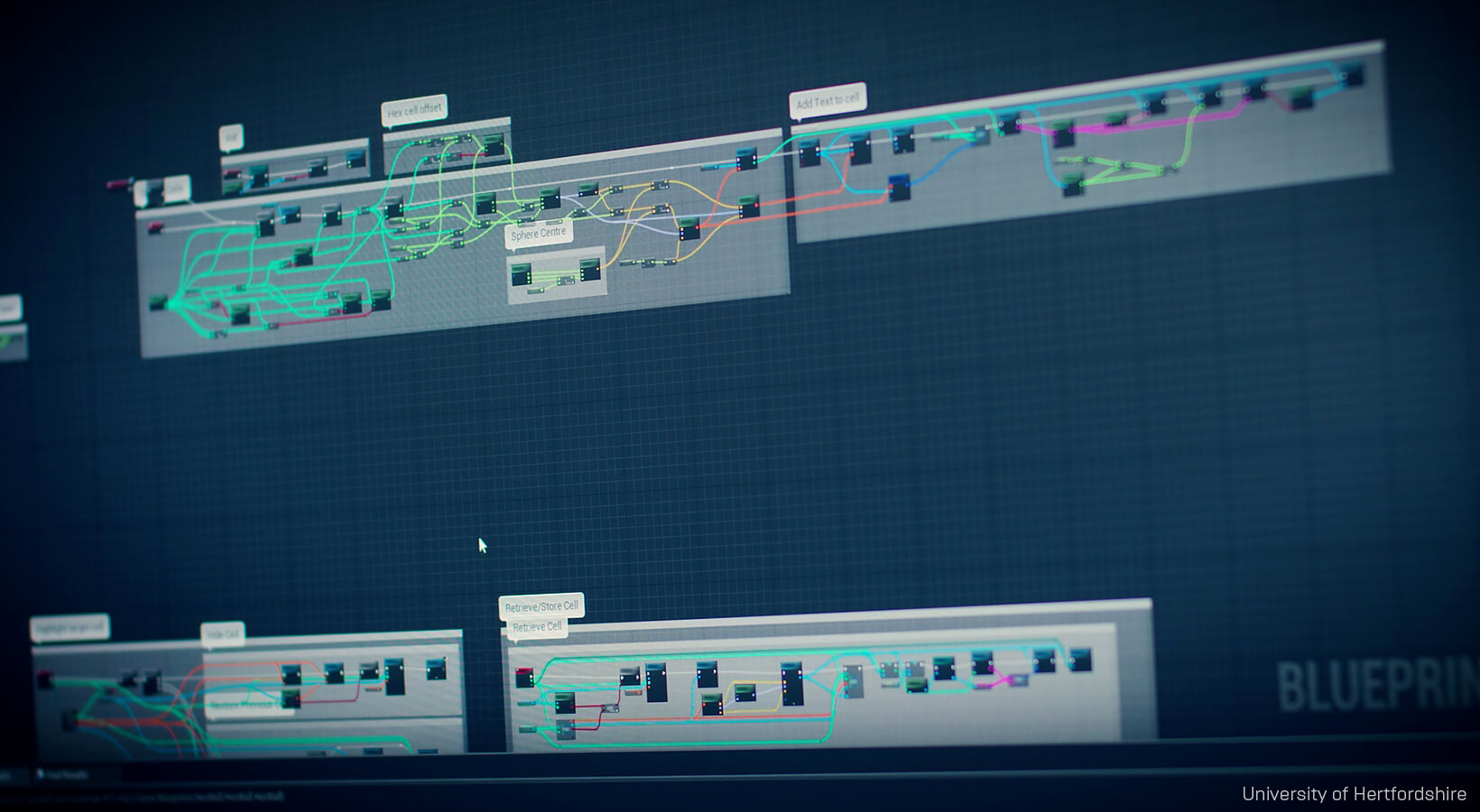30. März 2020
Teaching transferable real-time skills at the University of Hertfordshire
The university's staff specializes in teaching Unreal Engine, exposing students to an expansive range of real-time skills to prepare them for the diversity of careers in interactive 3D. “Cross-disciplinarity gives students the opportunity to go beyond the thing they thought they wanted to study,” says David Tree, Lecturer of Games and Animation Technology. “And that means that they can explore areas that they wouldn't have thought of.”

Developing transferable skills in interactive 3D
The university’s digital animation program focuses on encouraging students to find their creativity. It develops their art skills and also bolts on the technical knowledge they’ll need for real-world production.Students who join the course complete a common first year regardless of the degree they're on. This enables them to try out new things they may never have thought to look into. “They might say ‘I came on as a 3D modeler, but I’ve discovered I love working with real-time shaders and I love building levels in Unreal,’” says Martin Bowman, Joint Program Leader of Digital Animation. “So at the end of that year, we just switch them from whichever degree they started from to the one they never realized is where their true talent lies.”

By learning Unreal Engine, students are equipped with a set of transferable skills—ones that have traditionally been associated with game development and which are in high demand for an incredible range of industries including virtual production, animation, automotive, aerospace, medical visualization, and AR/ VR. “Our students no longer look at the future ahead of them and think ‘I must work in the entertainment industry,’” says Bowman. “Obviously many will. But a lot of them realize there’s this vast area of other stuff that requires real-time visualization, and most courses aren't really catering to that.”

This ethos has had real, tangible effects. “Over the summer I ended up getting a job doing cinematics in Unreal Engine,” says student Justin Mills. “I was using techniques I picked up in the first year studying things like cinematography and camera angles—things you don’t normally associate with games. So the overall skill sets that you learn here are great.”
With a range of transferable real-time skills under their belts, students who graduate from the program have a high success rate for entering the competitive job market. “We've got students all around the world now,” says Neil Gallagher, Senior Lecturer of BA and MA Games Art. “We've got students at Nintendo, at Ubisoft. We've got students at Bentley and visualizing at McLaren.”

When they get to companies like these, the fact the students have learned real-time workflows using Unreal Engine comes as a huge advantage. “Unreal Engine is the tool they're using at these really high-end companies—our students are using the same tool for their everyday projects here”.
Switching engines to increase student employability
While Unreal Engine has proven a huge success for teaching real-time skills and giving students the best chances in the job market, the university did not always use it. “Many years ago, we used to use another game engine. It was a good game engine, but it had a lot of limitations,” says Bowman. “It didn't have a great take up in the industry, and we realized that for our students to maximize their employment chances, we needed to move to a different one.”
After assessing a number of options, the teaching staff settled on Unreal Engine. With millions of people already using it worldwide, they realized there was a wealth of support to help their students learn the technology. “That worldwide community is massively helpful in engaging students and making them realize that there's jobs for them—not just locally, but jobs across the world,” says Bowman.
The ability of Unreal Engine for myriad real-time uses beyond games is one of the things that makes it so powerful, Bowman believes. “Where it excels is the fact that it can be customized, it can be made into pretty much anything you want,” he says. “Companies like Framestore and Blue Zoo are using Unreal and hiring our students, because they can work with the director on shots and get instant feedback from them.”
What’s more, with some systems designed specifically for those of a non-technical outlook, it becomes possible for anyone to learn the engine. “It's accessible to people who maybe signed up to an arts course and didn't realize they were going to have to learn some programming,” says Tree. “The first Blueprints lesson comes and they say ‘But I'm not a programmer! I’m terrified of this.’ And then you explain that you just plug the wires in and you can experiment, and if you get it wrong, it just tells you where you got it wrong.”

The Blueprint visual scripting system in Unreal Engine puts tools normally reserved for programmers into the hands of non-technical users via an intuitive visual node-based interface.
For those interested in learning C++, the open nature of Unreal Engine provides the opportunity to dive into the code: “If we need to, we can modify or alter the engine in such a way that we can make it do what we want to and then use it to train technical artists,” says Tree.
The future is interactive 3D
The lecturers on the games program at the University of Hertfordshire believe real-time skills are going to be increasingly important in the job market in the years to come. “We're in a very fast-changing industry—it's constantly evolving, constantly developing,” says Bowman. “One thing we can guarantee is that the future is going to become more interactive, it’s going to be 3D, and it will be made in Unreal.”
Want to start teaching Unreal Engine as part of your school’s game development curriculum? Contact us and we can start that conversation with you!
You’ll also find free hands-on video courses and guided learning paths on Unreal Online Learning.
